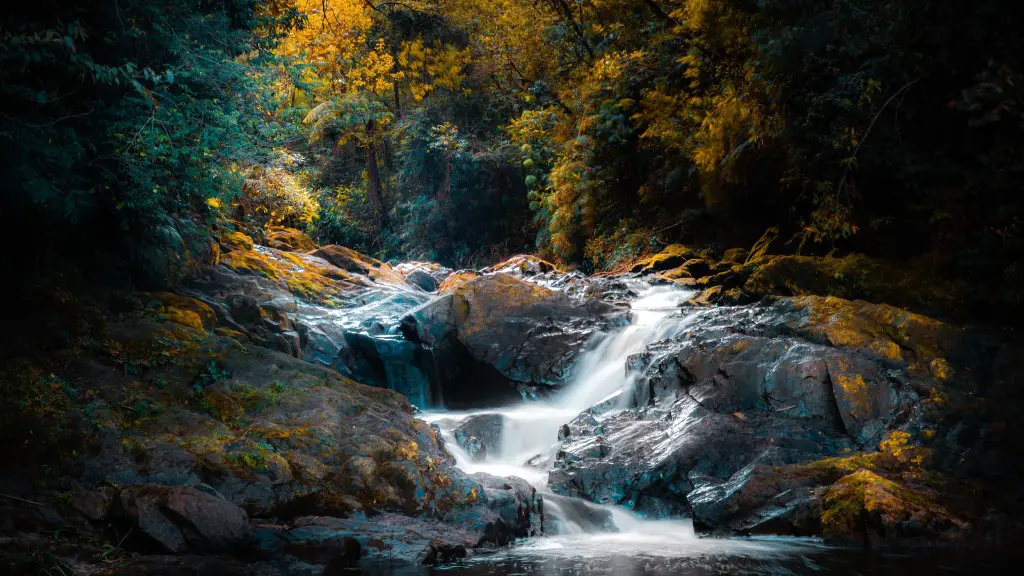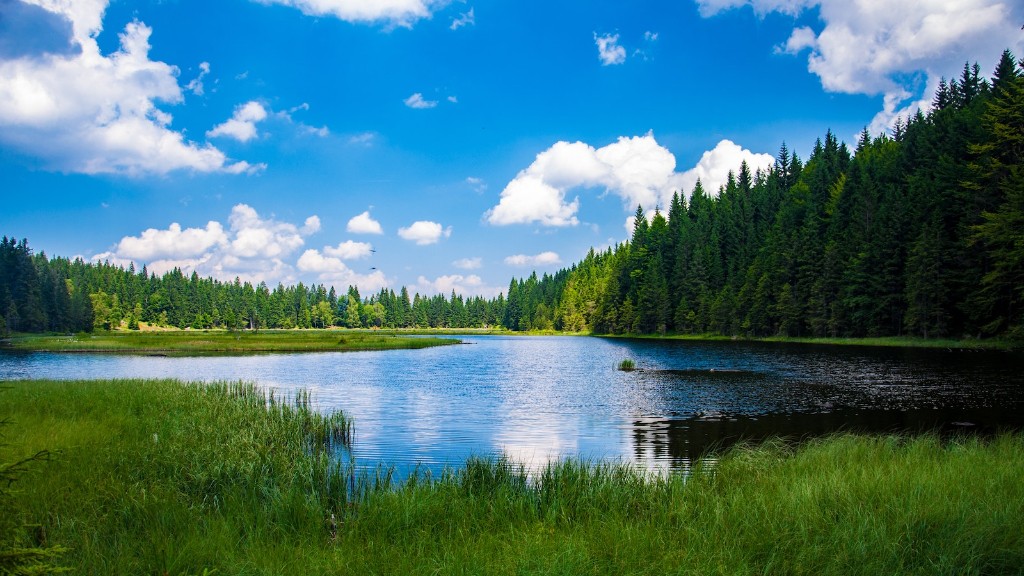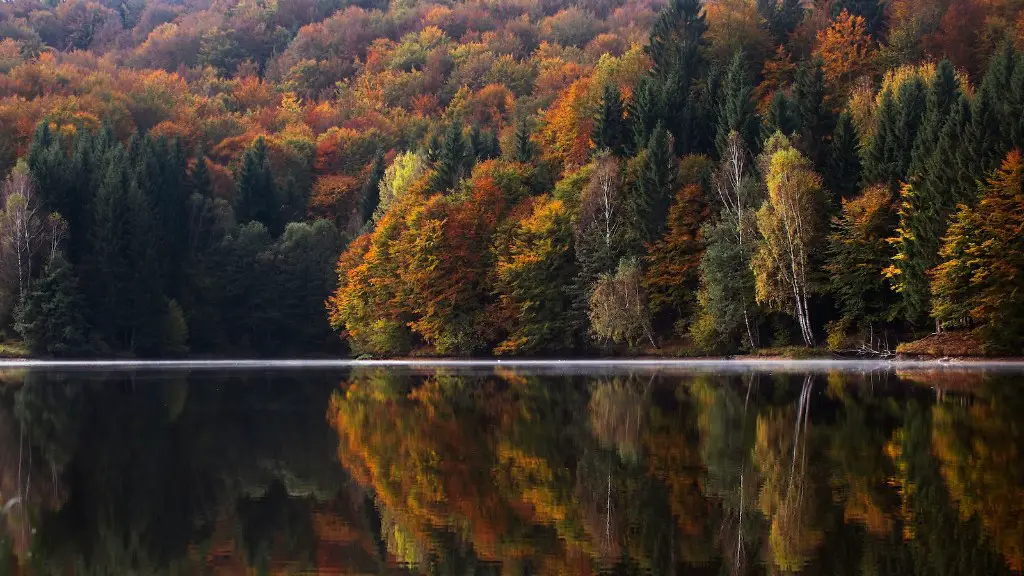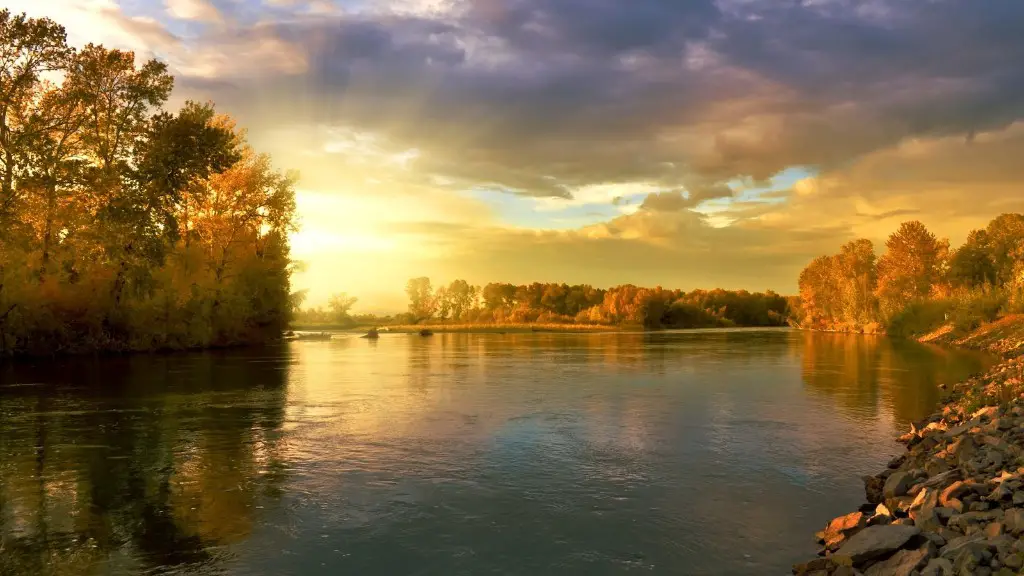The Mississippi River is the longest river in the United States. Its source is Lake Itasca, in northern Minnesota. From there, the Mississippi River flows from Minnesota, through Wisconsin, Iowa, Illinois, Missouri, Kentucky, Tennessee, Mississippi, and finally into Louisiana. It empties into the Gulf of Mexico.
The Mississippi’s origin can be traced back to an ancient glacial river that began flowing from Lake Itasca. This river then made its way south, joining with other small streams. Eventually, it reached the Gulf of Mexico, so today the Gulf “receives” the Mississippi.
The Mississippi River has been an important part of the United States since its inception. During the 1800s, the river was used extensively to settle the Midwest. Many of the towns and cities along its banks were built along the river’s trade route. It was also used as a major transportation route in the early days of the country.
In recent years, the Mississippi River has faced several environmental concerns. The river’s volume of water has decreased by almost a third due to climate change and other human factors. The river also suffers from human sewage and other pollutants, a problem that has been mostly unaddressed for many years. The amount of nitrate pollution in the water has led to algal blooms that can support less aquatic life.
Despite the current challenges, the Mississippi River is still a life-giving force for millions of people. It is also an integral part of the US economy, providing irrigation for many of the country’s agricultural regions and hydropower for many cities. According to some experts, the river also plays a crucial role in the global water cycle, keeping the planet’s water cycle in balance.
Most expert agree that protecting the Mississippi is key to making sure our future generations can enjoy its many benefits. The US Environmental Protection Agency has taken steps to reduce pollutants, while various organizations and individuals have also worked hard to protect the river and its watershed. However, there is still much work to be done.
Fauna and Flora of the River
The Mississippi River provides an important habitat for a wide variety of fauna and flora. There are over 300 species of fish, more than 5,000 species of plants, and over 350 species of birds that live in the wetlands along the river. Some of the species of animals that have a home in the river and its surroundings include the American alligator, the American white pelican, and the bald eagle. The river is also a key source of food and shelter for these animals.
The river is home to various endangered species too, including the Pallid Sturgeon, Blue Catfish, and the Whooping Crane. This is why conservation efforts are so important along the Mississippi. Many initiatives have been undertaken to help restore vital habitats for these species, such as replanting forests, restoring wetlands, and installing fish passages.
Not only does the river provide a home to wildlife, but it is a major source of drinking water for millions of people. Along its shores and tributaries, over 500 municipalities get their drinking water from the river – from Minneapolis and St. Louis to smaller towns along the way.
History of the River
The Mississippi River has a long, rich history of exploration and settlement. Native Americans have relied on the river as a source of food and transportation for centuries. In the 1500s, Europeans began to explore the area, eventually establishing major trading centers along the river’s banks. After the American Revolution, the territory along the Mississippi became an important part of the new nation, with the river serving as a major highway for settlers.
In the mid-1800s, the river was used extensively to transport crops and goods, and by the end of the century, it had become an important source of power for the industrial revolution. During the 20th century, river navigation became even more important as the US economy continued to grow. The river remains an incredibly important resource for the country, providing essential navigation and transportation services.
Today, the Mississippi River is more than just a vital transportation route. It is also a popular recreational destination for many people. Along the river, you will find a variety of activities such as fishing, bird watching, hiking, and camping. The river has even become an Important Bird Area (IBA) for numerous species of migratory birds.
Economic Role of the River
The Mississippi’s economic importance cannot be overstated. With its extensive network of tributaries, the river provides a vital transport route for good and services. The river also serves as energy source, with 18 hydroelectric dams along its banks. These dams can generate over 24 gigawatts of electricity, enough to power over 2 million homes.
The river is also an important source of jobs. Many people rely on the river for their livelihoods, ranging from farmers and fishermen to barge operators and dockworkers. Furthermore, many ports along the river provide critical access to global markets, helping to foster economic growth throughout the region.
Finally, the Mississippi River is a major contributor to tourism. Each year, millions of people flock to the Lower Mississippi region to enjoy its beauty and its many activities. These visitors often go on to spend money in local shops, restaurants, and hotels, creating a vital economic impact for the region.
Pollution Challenges for the River
Despite its importance, the Mississippi River is facing several serious pollution threats. One of the biggest concerns is the amount of agricultural runoff that makes its way into the river. This runoff contains a variety of pollutants, such as fertilizers and pesticides that can affect the water’s quality and damage aquatic life.
Industrial pollution also poses a major threat to the river. Many factories along the river’s banks still dump their untreated waste into the water, introducing dangerous toxins into the ecosystem and endangering human health. The EPA has taken steps to address the problem and while there has been some progress, much work still needs to be done.
Finally, the river faces threats from climate change. Rising temperatures mean that droughts are becoming more common, decreasing the river’s flow and putting local ecosystems in danger. Warmer temperatures also contribute to higher levels of oxygen-depleted water in the river, making it difficult for fish and other aquatic life to thrive.
Protection and Conservation Efforts
Despite the challenges, the river is not beyond saving. Over the years, the EPA has taken steps to improve the water quality and protect the river from potential pollutants. Organizations like the Environmental Defense Fund and the Nature Conservancy are also helping to protect the river and its surrounding environment.
The states along the river are also taking steps to protect it. Louisiana, for example, has taken steps to reduce fertilizer and pesticide runoff, while Illinois is working to reduce industrial pollution. Other states are also working to introduce sustainability efforts, such as introducing legislation that requires companies to recycle their waste rather than dumping it into the river.
The local communities have also been working hard to conserve the river, establishing programs to educate people about its importance and boosting awareness about the need for conservation. By working together, all of us can help to protect the Mississippi River for generations to come.





